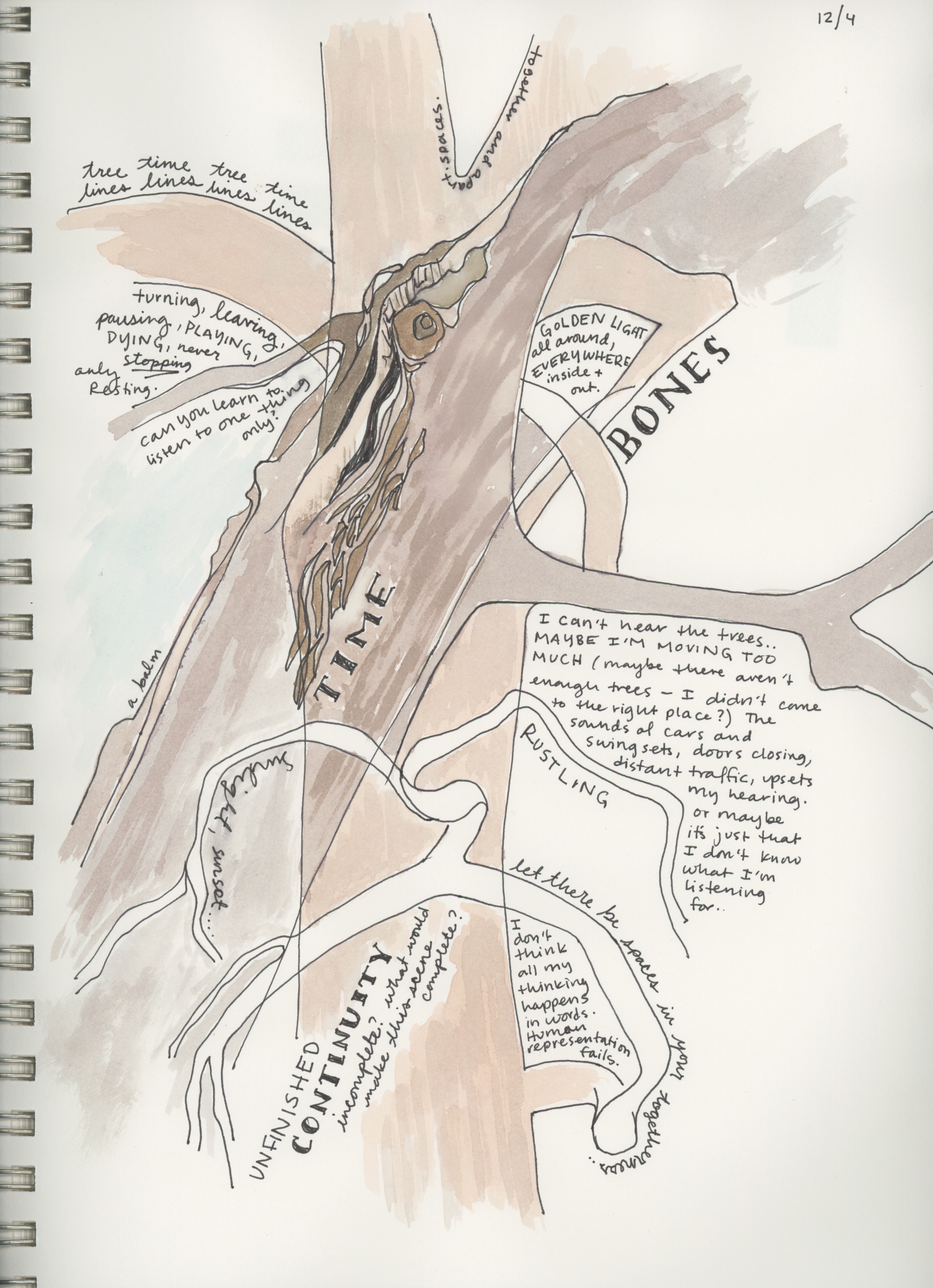Serendip is an independent site partnering with faculty at multiple colleges and universities around the world. Happy exploring!

Final Reflection
It is really hard for me to write this week. Not just because it is cold, or my battery is dying, or because I don’t want to. But because coming here, for the “last time” this semester (I say “last” because I may visit on my own before I leave) forces me to think about how this semester has gone so far. In a way, Rhoads Pond has really reflected the way this semester has gone for me. In the beginning of the year, everything was beautiful. The pond was green and lush, absolutely gorgeous with life. Now, it’s different. Sandy had strewn the pre-existing shrubbery away, leaving a barren and brown landscape. Geese still stay on the water, and the reflections on the ripples are still mystically magnificent, but the tones are duller, muted. That’s how I’ve been feeling as the semester draws to an end.

Poem From our Outdoor Adventure
So I'm finally posting the poem we wrote collectively as a summation of Monday's exporations at Ashbridge Park. I attempted to scan in the poetic product of Monday's wandering, but due to both my inability to work technology and the failure of Canaday's scanners, I was unable to. I thought it would have been really cool, though, if we had all been able to see eachother's handwriting and marks upon the paper. I might still scan it in later and attach it as a comment to this post, but we'll see. For now, here it is:
Stagnant water breeds oily residue
Slowly moving water
a plastic bottle, caught by a branch in the stream
Washed up against a bush with berries like polished red glass
What would it take for that sound to stop?
New experiences and knowledge
History, biology, and poetry swirling together to create this knowledge
A knowledge we have always had-just perhaps forgot.
What fuels the remembering? The air of the trees, the seeds, the mud?
All I remember now in detail is that there were minnows in the water so the rocks looked lovely.
Water trickled, running like thoughts.
Man cuts, stabs at the drumb. The water rolls and heals.
As the sunshine melts the frost on the grass, I breathe.

Is Butchering Cruel
I was listening to the most recent This American Life, which centered entirely around the theme of animal sacrifce, and I wanted to share one of the stories from the show because I feel like it directly relates to our dicussion of Coetzee/Costello's beliefs. The journalist, Camas Davis, periodically holds classes that teach people how to raise and butcher animals for food. These classes somehow, counteractively to popular perception, actually tend to prevent people from eating meat by introducing them to the complexities of home-butchering/the meat industry in general. II really loved the story, and thought alot of Davis's quote directly responded to Costello's desire to realize the consciousness of animals.
http://www.thisamericanlife.org/radio-archives/episode/480/animal-sacrifice?act=2
Hope you guys like it!

Surrendering to All That Is - Sacred Paths
"We are wounded in all the right places" - from Wounded by 1 Giant Leap
My Blinded Experience
On the blind field shuttle tour of Bryn Mawr Campus, Carmen showed us that being blind does not mean being impaired but possessing a different way to perceive the world.
I was first at the back of the line. I could feel (or I thought I felt) the girl behind me shaking as we walked in the woods. I could hear a big humming engine right beside me as we crossed the street. Any small vibrations turned into big swings in the back of the line, as I consistently stepped on and off the paved trial onto the grass during the “peaceful” later part of the shuttle. Though I didn’t open my eyes during the whole trip, I couldn’t keep myself from aimless waving one of my arm for branches or imaginary obstacles. My shoulder is now a bit sore from all the sketching and waving in the air.
On the way back, I was at the beginning of the line. Knowing the route I was going to walk on, I felt easier and paid more attention to the flickering of lights on my eyelids. I even noticed that the paved trial on front of the English house was more “rough” than the paved trail parallel to senior row. However, it was still terrifying when I heard a car shooting through my front as Carmen called everyone to cross the street again.




